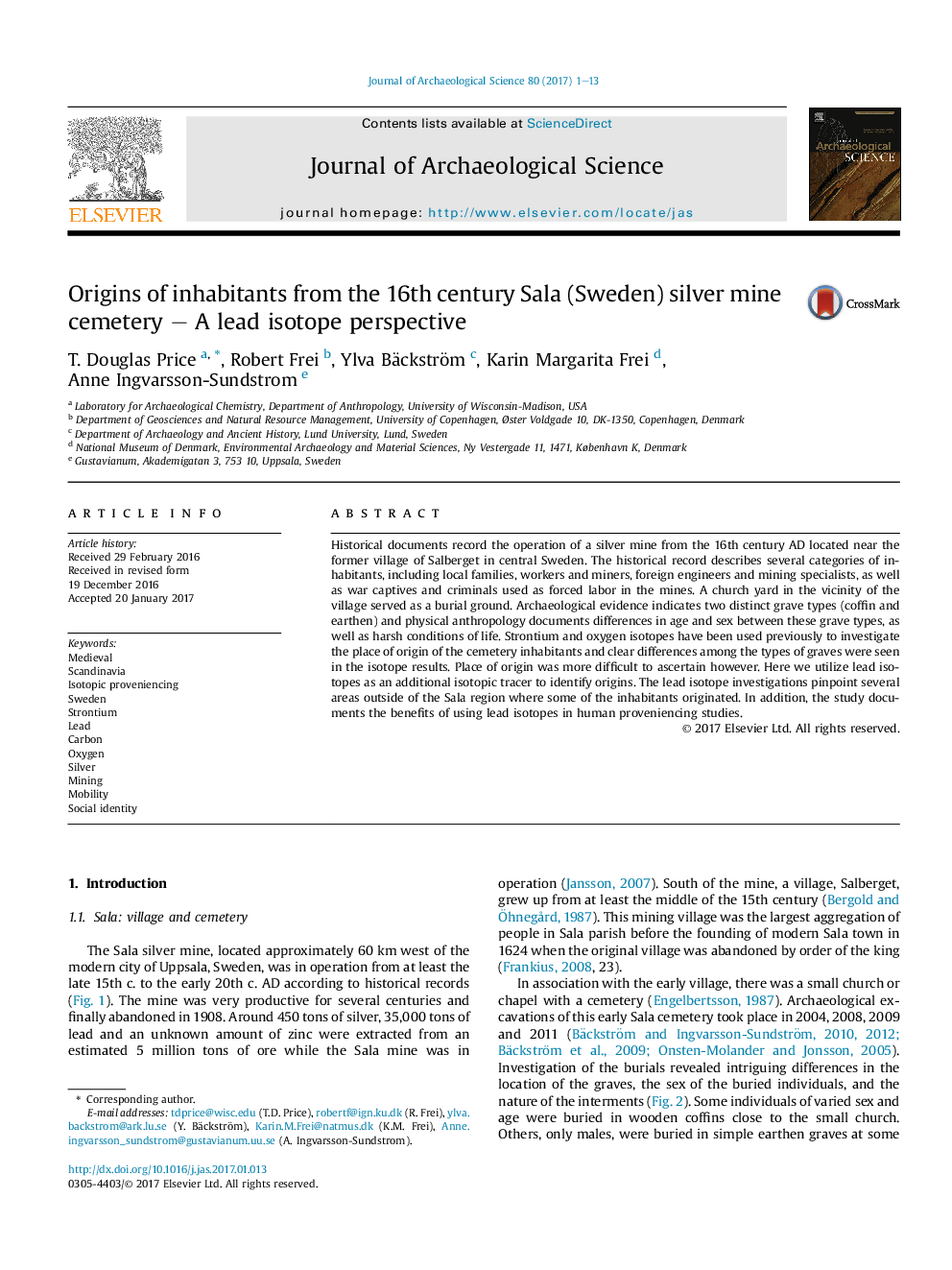| کد مقاله | کد نشریه | سال انتشار | مقاله انگلیسی | نسخه تمام متن |
|---|---|---|---|---|
| 5112077 | 1483880 | 2017 | 13 صفحه PDF | دانلود رایگان |
عنوان انگلیسی مقاله ISI
Origins of inhabitants from the 16th century Sala (Sweden) silver mine cemetery - A lead isotope perspective
ترجمه فارسی عنوان
ریشه های ساکنان قرن شانزدهم میلادی قبرستان صالح (سوئد) - دیدگاه ایزوتوپ سرب
دانلود مقاله + سفارش ترجمه
دانلود مقاله ISI انگلیسی
رایگان برای ایرانیان
کلمات کلیدی
قرون وسطی، اسکاندیناوی، اثبات ایزوتوپیک، سوئد، استرونتیوم، رهبری، کربن، اکسیژن، نقره، معدن، تحرک، هویت اجتماعی،
موضوعات مرتبط
مهندسی و علوم پایه
مهندسی مواد
دانش مواد (عمومی)
چکیده انگلیسی
Historical documents record the operation of a silver mine from the 16th century AD located near the former village of Salberget in central Sweden. The historical record describes several categories of inhabitants, including local families, workers and miners, foreign engineers and mining specialists, as well as war captives and criminals used as forced labor in the mines. A church yard in the vicinity of the village served as a burial ground. Archaeological evidence indicates two distinct grave types (coffin and earthen) and physical anthropology documents differences in age and sex between these grave types, as well as harsh conditions of life. Strontium and oxygen isotopes have been used previously to investigate the place of origin of the cemetery inhabitants and clear differences among the types of graves were seen in the isotope results. Place of origin was more difficult to ascertain however. Here we utilize lead isotopes as an additional isotopic tracer to identify origins. The lead isotope investigations pinpoint several areas outside of the Sala region where some of the inhabitants originated. In addition, the study documents the benefits of using lead isotopes in human proveniencing studies.
ناشر
Database: Elsevier - ScienceDirect (ساینس دایرکت)
Journal: Journal of Archaeological Science - Volume 80, April 2017, Pages 1-13
Journal: Journal of Archaeological Science - Volume 80, April 2017, Pages 1-13
نویسندگان
T. Douglas Price, Robert Frei, Ylva Bäckström, Karin Margarita Frei, Anne Ingvarsson-Sundstrom,
